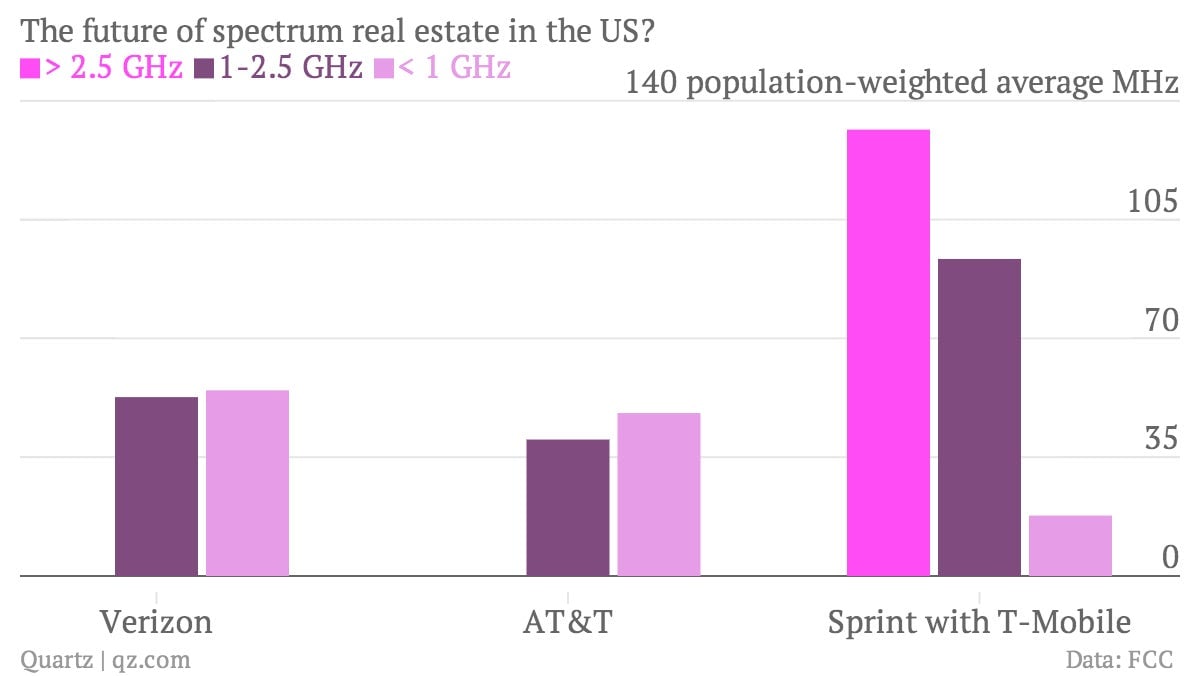How a T-Mobile-Sprint tie-up could shake up US telecoms
Sprint is reportedly considering a takeover offer for T-Mobile, a merger that would combine the third- and fourth-largest telecoms by customers. While a tie-up wouldn’t supplant numbers one and two, Verizon and AT&T, it would hypothetically be more competitive because it would have more customers and bigger networks.

Sprint is reportedly considering a takeover offer for T-Mobile, a merger that would combine the third- and fourth-largest telecoms by customers. While a tie-up wouldn’t supplant numbers one and two, Verizon and AT&T, it would hypothetically be more competitive because it would have more customers and bigger networks.
The other hypothetical—and the reason Sprint is still mulling and not proposing this merger—is that regulators may see a tie-up as bad for consumers, and put the kibosh on the whole project. (AT&T’s attempt to buy T-Mobile two years ago ran into similar obstacles.) Lydia DePillis at the Washington Post examines the reasons to worry, including some helpful charts, one of which I’ve adapted above. It shows the average spectrum holdings of the three companies in the US (weighted by population, since spectrum is sold regionally), and combining a merged Sprint-T-Mobile with several of the latter company’s recent acquisitions, including Clearwire and MetroPCS.
Note especially the light-purple low frequency spectrum below 1 GHZ: It’s considered the most valuable because signal there travels through obstacles and over long distances more easily. (Higher-frequency spectrum, which requires more cell towers to cover the same area, is considered more useful for adding bandwidth in densely-populated places.) Verizon and AT&T have the most low-frequency spectrum, to the point where they haven’t needed to invest in high-frequency expansion, while Sprint, which owns the most spectrum overall, has the least low-frequency holdings. Indeed, even after a hypothetical merger, New Sprint’s vastly larger spectrum holdings would still be valued at less than those of either Verizon or AT&T, according to their regulatory filings.
In 2015, the US government will undertake a complex transaction, purchasing infrequently used low-frequency spectrum from TV broadcasters and re-selling it to the telecoms. T-Mobile and Sprint, along with the US Department of Justice, have seemingly convinced the Federal Communications Commission to limit the amount of low-frequency spectrum the two market leaders could purchase on antitrust grounds. AT&T and Verizon, meanwhile, are fighting potential limits on the auction, arguing that it would reduce the revenue the government could generate from the sales.
A merger and auction limits could give a future New Sprint the spectrum resources—low, medium and high—to give AT&T and Verizon a real run for their money, perhaps flipping the table entirely. But the shape of spectrum holdings also underscores the advantage that AT&T and Verizon would have in the market if they were able to buy up the last remaining low-frequency spectrum in 2015.